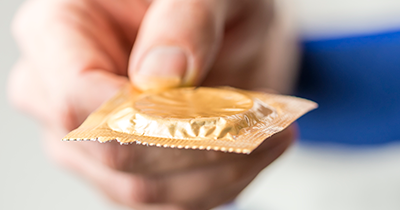AIDS or acquired immunodeficiency syndrome is a chronic, life-threatening condition that results from infection with HIV or human immunodeficiency virus. HIV damages your immune system and inhibits its ability to fight other organisms that cause diseases.
What are your chances of getting HIV? HIV is sexually transmitted, so your risk depends on your sexual behaviors, but it can also spread through infected blood. An infected mother may also spread the virus to her child while pregnant or during childbirth and breastfeeding.
Without treatment, HIV infection can lead to AIDS. There is no cure for the disease, but certain medications can slow down its progression.
How Likely Am I to Contract HIV?

Your risks of getting HIV depend on several factors:
Sexual Preference
- Having sex with an infected male partner is associated with a greater risk of getting the virus than with an infected female partner.
- Males also have a greater chance of contracting HIV by having anal sex with another male partner.
- Infected women who have sex with other women can transmit the virus through vaginal secretions as well as menstrual blood.
- Your chances of getting HIV and other sexually transmitted infections (STI) are greater with unprotected sex.
- You are more likely to get HIV in the receptive (bottom) position compared to an insertive (top) position.
Other Existing STIs
- You are more likely to get HIV if you have an untreated STI that can cause sores and ulcers in the genitals, creating openings in the skin where the virus can easily enter.
- People who have both STI and HIV are more likely to infect their partners.
Age
- People can get HIV at any age, but younger people are more likely to be infected. Studies show that people between the ages of 20-24 have the highest rates of infection.
- Young bisexual/gay men have greater chances of getting HIV than older bisexual/gay men.
Other Factors
- Sharing needles used for intravenous drugs increases your chances of contracting HIV because needles break through skin barriers and spread infected blood.
- Uncircumcised men are more likely to get HIV than circumcised men.
Probability of Acquiring HIV from an Infected Source
|
Types of Exposure |
Risk |
|
Parenteral |
|
|
Blood transfusion |
Very high |
|
Needle-sharing |
High |
|
Needle-stick injury |
High |
|
Sexual |
|
|
Receptive, anal |
High |
|
Insertive, anal |
High |
|
Receptive, vaginal |
High |
|
Insertive, vaginal |
High |
|
Receptive, oral |
Low |
|
Insertive, oral |
Low |
|
Others |
|
|
Mother-to-child, with mother taking at least 2 weeks antiretroviral therapy |
High |
|
Mother-to-child, with mother taking combination therapy, low viral load |
High |
|
Biting |
Very low |
|
Spitting |
Very low |
|
Throwing body fluids (semen/saliva) |
Very low |
|
Shared sex toys |
Very low |
What to Do If You Suspect You Have HIV
The best thing to do if you think you are at risk or have HIV is to get tested for the disease. You can do this at home using anFDA-approved test kit for HIV or you can go to your doctor, community health center, or other centers. To find HIV testing locations, use the HIV Testing and Care Services Locator according to your ZIP code.
For a tutorial of how to use the HIV rapid home test kit, watch this video:
How Can You Reduce the Risk of Getting HIV?

The most effective way to reduce your chances of getting HIVor other STIs is to abstain from sex and to stop using illegal IV drugs.
However, if you are sexually active, you should modify your behavior to reduce your risk by:
- Always use condoms. Consistent and correct use of condoms effectively reduces your risk of getting HIV.
- Avoid risky sexual behavior such as anal intercourse, oral sex and unprotected sex.
- Stick to one sexual partner. Having more than one sexual relationship increases your risk of getting infected with HIV or other STIs. You are also more likely to get the disease if your partner has more than one sexual partner.
- Get tested for other sexually transmitted infections and get treated if positive. Encourage your partner/s to do so, too. Sexually active individuals must get tested for STIs at least once a year.
- Consult your doctor about getting pre-exposure prophylaxis if you are at risk of getting HIV infection. For this to be effective, you must consistently take a pill every day.
- Ask your doctor for post-exposure prophylaxis within 3 days if you think you have been exposed to HIV and you are previously HIV-negative. To be effective, you must start taking post-exposure prophylaxis immediately, daily for 4 weeks, to reduce your chances of getting HIV.
- Tell your sex partner about your HIV status and ask them about their status to help you make appropriate decisions about your sexual relationship and strategies you must use to prevent getting/transmitting HIV.
- Encourage HIV-positive partners to get treatment and to maintain it. This will reduce the viral load (the amount of virus) in the blood. If treatment is consistent and correct, people infected with HIV can live for many years, and reduce their chance of transmitting the virus to their sex partners.
